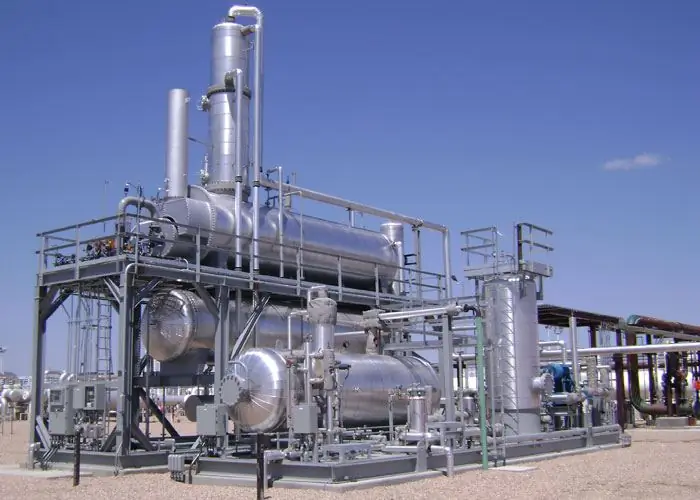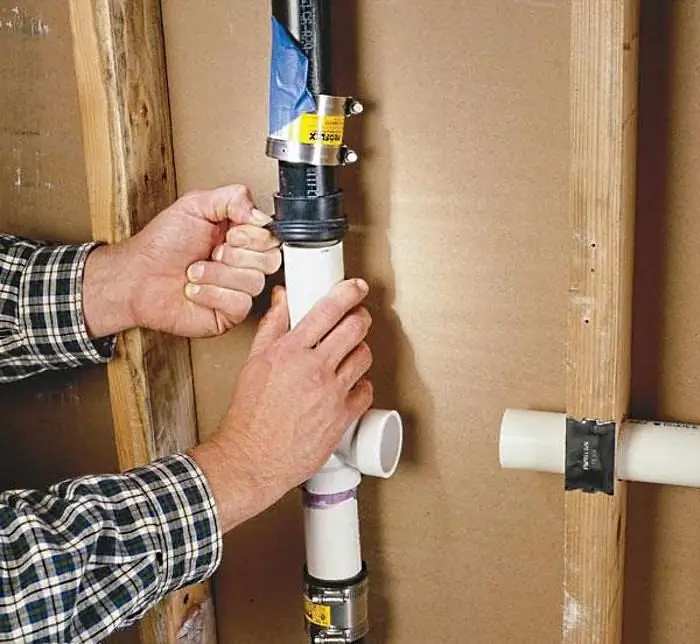2026 Author: Howard Calhoun | [email protected]. Last modified: 2025-01-24 13:10:41
Smerch-2 ship rocket launcher (RBU-6000) is the brainchild of the Moscow Research Institute of Thermal Engineering, produced by Zavod No. 9 in Yekaterinburg. Used to counter enemy submarines and torpedoes with depth charges.

History of Creation
With the advent of nuclear submarines in the ranks of the navy of Western countries, the issue of obsolescence of systems to counter them has been raised.
The technical solutions that surface ships were equipped with were able to stop conventional diesel-electric submarines. The atomic ones outperformed.
Advanced sonar and the maneuverability of the new submarines made it possible to evade depth charges and attack surface ships at long range without being detected.
Only guided anti-submarine missiles, a new generation weapon, could cope with the task of detecting a nuclear-powered ship at a greater distance. Since the mid-fifties, the development of such anti-submarine weapons has been carried out in the USSR and in the West.fight.

Tornados
In the sixties, the Council of Ministers decided to create two salvo and single firing systems:
- RBU-6000 "Smerch-2" with RSL-60 depth charges.
- RBU-1000 "Smerch-3" with RSL-10 shells.
Both complexes are capable of firing submarines at a great distance and intercepting torpedoes attacking a surface ship.
The advantage of the RBU-6000 rocket launcher (compared to previous systems) is the absence of manual loading: an automated mechanism feeds ammunition from a special cellar installed under the gun and loads it.
Both installations were adopted by the USSR in 1961.
Shooting
RBU-6000 rocket launcher was guided horizontally and vertically. Twelve barrels arranged in a circle were loaded automatically.
Detonation depth values were entered from the main captain's console, fire control for up to four RBU-6000 installations was also carried out from there. The reaction time between the detection of an enemy submarine and a preemptive salvo was 1-2 minutes.
The target was marked by hydroacoustic systems or ship navigation systems of the Dozor-Tyulpan type.
Power actuators read the set angle of fire when a target is detected and keep the barrels of the bomber in the same position during the shelling.

Tactical and technical characteristics of RBU-6000
Caliberdepth charge, as well as each of the 12 barrels of the bomb launcher guide package, is 212 mm. A bomb fired from the launcher successfully covers a distance of 6 km at a speed of 300 m/s, after which it begins to sink.
The length, width and height of the complex are 2 × 2.25 × 1.7 m, respectively. With a weight of 3, 1 tons, the control of turns and the sending of shells is carried out automatically.
The cannon can be rotated 180° horizontally to select the desired firing angle. With vertical guidance it is more difficult - it is possible to deviate from a right angle by 65 ° into a positive or negative plane. That is, a target located at an angle of -70 ° is already in the dead zone and inaccessible to the gun.

Shells
Deep bombs for RBU-6000 with the RSL-60 marking, used with the complex, had a mass of 23 kg and sank at a speed of 11 m/s.
They worked with such ammunition at sea depths of about 450 meters, while the charge was detonated remotely using the UDV-60 unit. The explosion of one munition produced the operation of the remaining "depths" within a radius of 50 meters.
The military industry did not stand still, and in 1966 shells for the RBU-6000 were put into service, in the design of which there was a non-contact acoustic detonator VB-2. The device allowed the bomb to be activated when an object was fixed within a radius of 6 meters.
Using VB-2 increased the chain reaction of nearby projectiles, increasing the blast radius from 50 meters to 100.
Later inthe eighties, the Magnetite bombs appeared, which were used to deflect torpedoes. Some sort of red herring.

Further development
The development of the military industry did not stop at RBU-6000. The modernization of Western submarines followed, and therefore the bomber was upgraded. The new sample was named RPK-8 "West".
The purpose of modernization was to increase the effectiveness of anti-submarine and anti-torpedo warfare. The product was developed by NPO Splav. The creators did not plan to go far from the RBU-6000, so they left the system of loading and feeding shells the same, as well as the firing control mechanisms.
The innovation was a projectile marked 90P, which carried an active part with an autonomous acoustic guidance system capable of detecting an enemy submarine within a radius of 130 meters.
The bomb was submerged to 1000 meters and weighed 19.5 kg. The use of 90R ensured a successful fight against submarines in 80% of cases.
In addition, RPK-8 successfully shot down torpedoes aimed at the ship, the threat response time was 15 seconds.

Verdict
The military industry does not stand still, every year new tools of warfare are invented. Something is being finalized, and something is shelved in order to be in demand again in the future.
Not so long ago, the Status-6 oceanic multi-purpose system was presented, about which there were only rumors before. The complex displaystorpedo-boat confrontation to a new level and nullifies most Western measures to counter submarines. And due to the peculiarities of operation, it does not fit into the classification of any type of weapon in the world, which creates loopholes in the legal part of the application of the system.
It is to be hoped that such weapons will remain a deterrent and will not develop into a doomsday weapon.
Peaceful skies and calm seas to all!
Recommended:
What is performance: concept, criteria and performance indicators

To build a system of staff motivation and to improve management, it is necessary to understand how efficiently employees and managers work. This makes the concept of efficiency extremely relevant in management. Therefore, you need to know what performance is, what are its criteria and evaluation methods
The first Saturn-5 rocket: review, characteristics and interesting facts

Based on the developments of the first decade of the 21st century, the Saturn-5 rocket (American-made) is the most powerful among its brethren. Its three-stage structure was designed in the sixties of the last century and was intended to deliver a person to the lunar surface. All the necessary ships, which were entrusted with the mission of exploring the natural satellite of our planet, were to be attached to it
Gas drying: definition, characteristics, methods and types of work, application of installation and special equipment

Gas drying is one of the cleaning methods that helps to get rid of moisture inside the pipeline. Its appearance is quite dangerous, as it causes corrosion of the metal. In addition, since mining is also carried out in conditions of low temperatures, ice formation is possible
HDPE pipe: do-it-yourself installation, installation features and instructions

When HDPE pipe is installed, the installation is done mainly by welding or compression fittings. If the installation rules are followed, the connections will be airtight and durable for many years
"Smerch" (MLRS): performance characteristics and photo of multiple rocket launchers

After the memorable "Katyusha", our Armed Forces have always paid special attention to multiple rocket launchers. There is nothing surprising in this: they are relatively cheap, easy to manufacture, but at the same time they are extremely mobile, ensuring the defeat of the enemy’s manpower and material base practically anywhere, wherever hostilities take place

